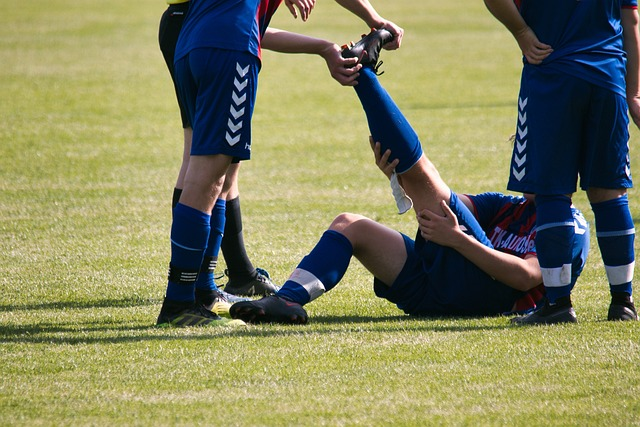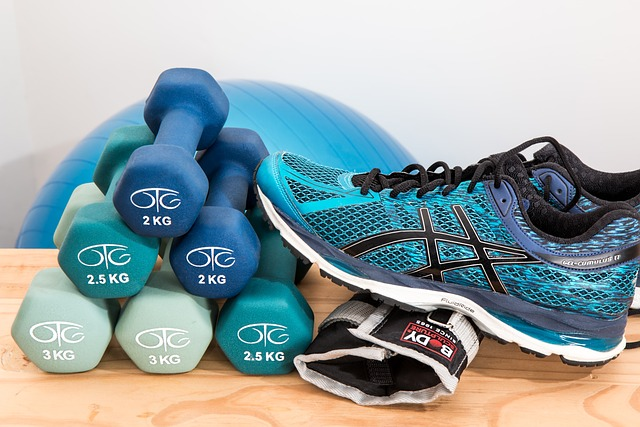What are the best ways to prevent knee injuries, and what treatments do you turn to once an injury has occurred? Those are the crucial questions this guide will answer. From identifying risk factors to detailed treatment plans for knee injuries, our focus is on preventing and treating knee injuries with straightforward advice and practical remedies. Get ready to learn how to keep your knees robust and bounce back if an injury sidelines you.
Key Takeaways
- Knee injuries such as ligament tears, tendon tears, fractures, and dislocations can impede mobility and cause pain, affecting athletes and non-athletes alike, and are usually caused by falls, direct impacts, or high-impact trauma.
- Preventative strategies for knee injuries include warm-up and stretching routines, strengthening leg muscles, and using protective gear, along with maintaining a healthy weight to reduce stress on the knees.
- Non-surgical treatment options for knee pain encompass medications, physical therapy, and alternative medicine methods, while severe cases may require surgical intervention such as arthroscopy, open surgery, or total knee replacement.
Understanding Common Knee Injuries
Knee injuries are not just a concern for athletes but can affect anyone at any stage of life. An injured knee can manifest in various forms, including:
- Ligament tears
- Tendon tears
- Fractures
- Dislocations
These injuries often lead to knee pain and impaired mobility in the injured leg. Considering the knee’s complexity, with its ability to pivot, twist, and bear significant weight, it’s no surprise that it’s prone to injuries from falls, direct impacts, or awkward landings. Even the patella, or kneecap, can fall victim to fractures from high-impact trauma.
Delving deeper, let’s explore the specific types of ligament injuries that are considered some of the most common knee injuries and often the culprits behind that all-too-familiar knee pain.
Anterior Cruciate Ligament (ACL) Injuries
The anterior cruciate ligament, commonly known as the ACL, is crucial for stabilizing the knee during dynamic movements. However, it’s easily injured during sports that involve sudden stops, changes in direction, or direct collisions. Athletes in soccer, football, and basketball are particularly at risk due to the cutting and pivoting actions inherent in these sports.
Fortunately, targeted warm-up routines can mitigate the risk of ACL injuries, emphasizing the importance of preparation before engaging in high-stress activities for the knee.
Posterior Cruciate Ligament (PCL) Injuries
Different from the ACL, the posterior cruciate ligament (PCL) sits at the back of the knee, and its injuries often arise from a direct blow to the front of the knee, such as that experienced in a car accident or during sports. Although PCL tears can be severe, they are commonly partial and may heal on their own without the need for surgical intervention, a silver lining for those impacted by this type of injury.
Collateral Ligament Injuries
Collateral ligament injuries, also known as ligament sprains, occur when the knee is pushed sideways, often as a result of contact injuries. For athletes or individuals involved in contact sports, the risk of suffering a collateral ligament injury is heightened due to the possibility of an external force, such as a tackle or collision, forcing the knee out of alignment.
Prevention Techniques for Knee Injuries

Preventing knee injuries is not only about avoiding pain but also about maintaining a lifestyle that’s active and free from limitations. A combination of warm-up and stretching routines, leg muscle strengthening, and the use of protective gear form the trifecta of knee injury prevention strategies.
Moreover, adopting a healthy weight management plan can greatly reduce the load on knee joints during daily activities, with each pound lost potentially reducing fourfold pressure on the knees.
Warm-Up and Stretching
Instilling a habit of proper warm-up and stretching is a game-changer for knee health. These activities not only prime the muscles for the physical demands to come but also significantly reduce the risk of knee-related injuries. Incorporating dynamic and active stretching into pre-workout routines improves joint looseness and blood flow, while static and passive stretching post-workout aids in muscle recovery and flexibility maintenance.
It’s also essential to maintain proper form during warm-ups to maximize the benefits for your knees.
Strengthening Leg Muscles

Strong leg muscles are the pillars that support and stabilize the knee joint. Exercises such as squats, lunges, and calf raises are pivotal in building the strength of the quadriceps, hamstrings, and gluteal muscles, which in turn fortify the knee against injury.
Additionally, specific exercises like high knee jogs and lateral shuffles can not only enhance muscle strength but also improve coordination and agility, further protecting the knee from harm.
Protective Gear
When it comes to shielding knees from potential harm, protective gear plays a critical role. Knee braces and sleeves can provide much-needed support and stability, especially during high-risk activities or for those recovering from an injury.
Selecting the correct fit for a knee brace is crucial to ensure it is effective without causing discomfort or restricting circulation.
Non-Surgical Treatment Options for Knee Pain
When faced with knee pain, not all roads lead to surgery. There’s a plethora of non-surgical treatment options, including medications, physical therapy, and alternative medicine, each playing a role in managing pain and enhancing the healing process.
Moreover, adopting lifestyle modifications such as engaging in low-impact exercises and weight loss can significantly alleviate knee stress and contribute to long-term knee health.
Medications

The pharmacy shelves offer a range of over-the-counter pain relievers, such as acetaminophen and ibuprofen, that can help manage knee pain. For those with more persistent discomfort, prescription medications, including antirheumatic drugs and COX-2 inhibitors, may be recommended by doctors to reduce inflammation and provide relief.
Additionally, topical analgesics can deliver quick, albeit temporary, reduction of knee pain when applied directly to the affected area.
Physical Therapy
Physical therapy stands as a cornerstone of non-surgical knee pain treatment. Through a combination of manual therapy, exercises, and modalities like ultrasound and electric stimulation, physical therapy aims to alleviate pain and aid the knee’s healing process. It is a commitment, often requiring multiple sessions per week, but the results can be significant, potentially reducing the need for more invasive treatments.
Alternative Medicine
For those seeking a different path to knee pain relief, alternative medicine offers options such as acupuncture, tai chi, and dietary changes. These methods can strengthen muscles, enhance overall coordination, and provide anti-inflammatory benefits, all contributing to preventing knee pain and managing it without reliance on pharmaceuticals.
Surgical Treatments for Knee Injuries
In instances where knee injuries are severe or unresponsive to non-surgical treatments, surgery may be the recommended course of action. The type of surgery—whether arthroscopic, open, or total knee replacement—is determined by the nature and severity of the injury, with less invasive techniques preferred whenever possible.
Arthroscopic Surgery
Arthroscopic surgery, particularly for ACL reconstruction, is a minimally invasive option that allows for a quicker recovery compared to open surgery. This procedure involves replacing the damaged ligament with a tissue graft, with options including autografts from the patient’s own body or allografts from a donor.
The choice between graft types depends on various factors, including the patient’s age and level of activity, with autografts often preferred for younger, active individuals due to their lower re-tear rate.
Open Surgery
Open surgery is reserved for knee injuries with extensive structural damage that cannot be adequately addressed through arthroscopic techniques. It provides the surgeon with direct visibility and access, which is particularly beneficial when dealing with complex or severe injuries.
Total Knee Replacement
For patients suffering from debilitating knee conditions like osteoarthritis, total knee replacement surgery may be the best solution. The surgery involves:
- Resurfacing the damaged knee joint with metal and plastic components
- Offering relief from pain and improved mobility
- A comprehensive procedure that replaces the affected surfaces of the tibial, femoral, and patellar components
- Ensuring a thorough restoration of the knee joint.
Rehabilitation and Recovery from Knee Injuries
The journey to recovery from a knee injury is a multifaceted process that involves sports physical therapy, exercise programs, and lifestyle adjustments. Physical therapy is vital to regaining strength and flexibility, while therapeutic exercises focus on muscle building around the knee.
It’s not just about the exercises but also about adopting modifications in daily life that can further protect and aid the knee during the recovery period.
Physical Therapy
Rehabilitation through orthopedic physical therapy is essential for restoring knee function and stability. With personalized treatment plans, patients undergo a regimen of strengthening and flexibility exercises, coupled with pain management techniques like electrical stimulation and cold therapy.
Education on body mechanics and injury prevention is also a critical component of successful recovery.
Exercise Programs

Exercise programs designed to prevent knee injuries, such as ‘Power Up to Play’, play a pivotal role in strengthening muscles and improving stability. These programs include a variety of exercises like running, plyometrics, and agility drills, which have been shown to significantly decrease the incidence of serious knee injuries.
Lifestyle Modifications
Making lifestyle modifications can significantly enhance the recovery process from knee injuries. Here are some ways to promote healing and minimize the risk of further injury:
- Make simple home adjustments to alleviate knee strain
- Use therapeutic apparel to support the knee
- Incorporate assistive devices to reduce stress on the knee
- Make changes to daily activity patterns to avoid activities that may aggravate the injury
By implementing these strategies, you can support your knee’s recovery and prevent future injuries.
Dr. Kevin D. Plancher’s Expertise in Knee Treatments
Dr. Kevin D. Plancher stands out as a leading figure in the field of orthopedic surgery and sports medicine, bringing years of dedicated experience and expertise to the treatment of knee injuries. His advanced training and commitment to the advancement of knee treatment methodologies have placed him at the forefront of innovative care.
Plancher Orthopaedics
At Plancher Orthopaedics, patients receive top-tier care for knee and other orthopedic conditions. The practice, with locations in Manhattan, NY, and Greenwich, CT, offers emergency treatment, pain relief, and surgical options when necessary.
Dr. Plancher’s practice, renowned for its cutting-edge approach to treatments, follows the latest clinical practice guidelines, including advanced robotic surgery options.
Awards and Recognition
Dr. Plancher’s excellence has been recognized repeatedly, as evidenced by his consistent accolades as a Top Doctor and his inclusion in Castle Connolly’s list of Top Doctors in the New York Metro area. These recognitions are a testament to his contributions and leadership in sports medicine, and his commitment to advancing knee treatments.
Summary
In summary, knee injuries represent a significant challenge, but understanding their intricacies, implementing preventive strategies, and knowing the treatment options can make a world of difference. From the complexities of ACL, PCL, and collateral ligament injuries to the effectiveness of physical therapy and cutting-edge surgical interventions, we’ve covered a broad spectrum of knee health topics. The journey doesn’t end at treatment; rehabilitation and lifestyle modifications play a crucial role in full recovery. Moreover, the expertise of specialists like Dr. Kevin D. Plancher offers a beacon of hope for those seeking advanced care for their knee conditions. Remember, taking proactive steps toward knee health can preserve your mobility and enhance your quality of life.
Frequently Asked Questions
What are the most common knee injuries?
The most common knee injuries are ACL tears, PCL injuries, collateral ligament injuries, meniscal tears, tendon tears, and fractures such as a dislocated kneecap. These can occur due to falls, direct force, awkward landings, or forceful twisting.
Can PCL injuries heal on their own without surgery?
Yes, PCL injuries can heal on their own without surgery, but the healing process depends on the severity of the injury and individual health.
What non-surgical treatments are available for knee pain?
Non-surgical treatments for knee pain include medications, physical therapy, and alternative medicine approaches such as acupuncture and dietary changes. It’s important to explore these options with a healthcare professional to find the best approach for your individual needs.
When is total knee replacement surgery considered?
Total knee replacement surgery is considered when there is significant damage to the knee joint, resulting in severe pain and impaired mobility that has not responded to other treatments, such as those for conditions like osteoarthritis, rheumatoid arthritis, traumatic arthritis, fractures, torn cartilage, and torn ligaments.
What awards and recognitions has Dr. Kevin D. Plancher received for his expertise in knee treatments?
Dr. Kevin D. Plancher has received numerous awards and recognitions for his expertise in knee treatments, including being named a Top Doctor for 14 consecutive years and receiving the Order of Merit from the Orthopaedic Research and Education Foundation for his distinguished contributions.





 William D. Murrell, MD
William D. Murrell, MD Thomas B. Evely, DO
Thomas B. Evely, DO Clifford Voigt, MD
Clifford Voigt, MD Karthikeyan Chinnakkannu, MD
Karthikeyan Chinnakkannu, MD Max N. Seiter, MD
Max N. Seiter, MD Demetris Delos, MD
Demetris Delos, MD Lauren M. Fabian, MD
Lauren M. Fabian, MD